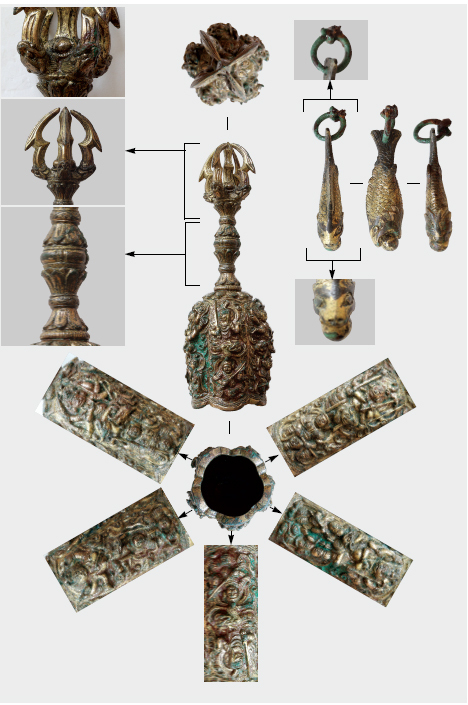South Korean researchers said Thursday they have uncovered dozens of artifacts used in Buddhist ceremonies nearly a millennium ago, as they begin to unravel the mystery behind an ancient shrine where they were discovered.
The 77 artifacts include a vajra, a type of club with ribbed spherical heads, bells and censers thought to be from the Joseon era (1392-1910), or possibly even earlier.
Researchers at the Seoul Institute of Cultural Heritage were wrapping up an archaeological field survey on Dobong Seowon, a tiny shrine for two Joseon-era scholars in northern Seoul, when they came upon a pot containing the objects.
 |
| This photo provided by the Seoul Institute of Cultural Heritage shows a Buddhist ritual bell from the Goryeo Dynasty (918-1392) uncovered at the site of Dobong Seowon, a Joseon-era (1392-1910) shrine in northern Seoul. (Yonhap) |
Scientists said the artifacts could even be from the earlier Goryeo Dynasty (918-1392), as the site of their discovery matches the location of a Goryeo temple ― one of the utensils even bears its name, the Dobong Temple.
Joo Kyeong-mi, a professor specializing in metalcraft, said the artifacts seem to be from the 11th century “at the latest,” as some of them exhibit traits unique to those found from the eighth and ninth centuries.
The fact that the pot was wrapped in a straw mat also suggests it may have been buried intentionally, she added.
Although the field survey was conducted in 2012, researchers said it took them two years to ensure that the artifacts would not decompose.
They were put on display at Seoul’s National Palace Museum of Korea on Thursday in an exhibit cohosted by the South Korean government. (Yonhap)
No comments:
Post a Comment